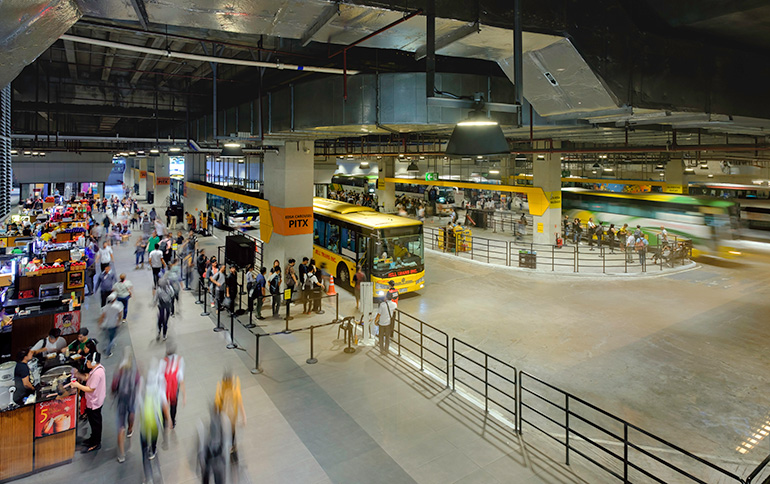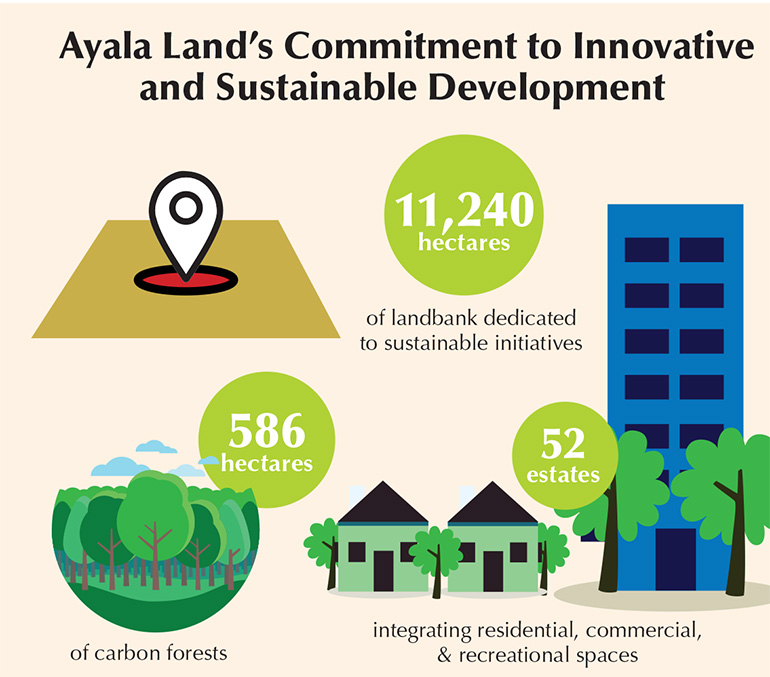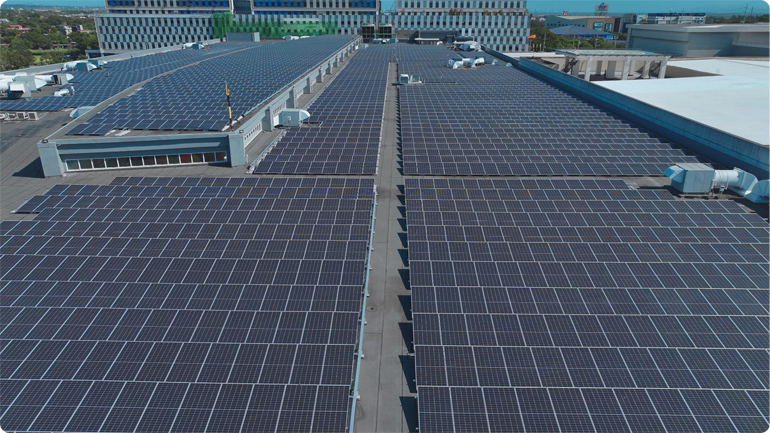Banks accelerate digital shift as more customers transact online
By Aaron Michael C. Sy, Reporter
INCREASED consumer demand for online services because of the coronavirus pandemic has accelerated the financial sector’s digitalization, with new players in the market also pushing traditional banks to adapt to the changing landscape of the industry.
Jose Teodoro K. Limcaoco, president and chief executive officer of Bank of the Philippine Islands (BPI), one of the country’s biggest lenders in asset terms, told BusinessWorld that the lockdowns imposed during the coronavirus pandemic forced the industry to find new ways of delivering their services to their clients.
“What the pandemic taught a lot of people was that you could not rely on the old means. Therefore, new technologies came to the fore — instant payments, e-wallets all came to the fore. And all of a sudden, what I would call the modern banking client expects this as part of the basic service already. I don’t know any young banking clients who don’t have the app.
I know a lot of older banking clients who won’t touch the app for discomfort, but all the new banking clients expect the app already,” Mr. Limcaoco, who is also president of the Bankers Association of the Philippines (BAP), the lead organization of universal and commercial banks in the country, said in an interview.
At the height of the pandemic, the Bangko Sentral ng Pilipinas (BSP) in October 2020 launched its three-year Digital Payments Transformation Roadmap, where it laid out initiatives meant to spur the Philippines’ shift to a cash-lite economy. It targeted to convert 50% of the total volume of retail payments into digital form and have 70% of Filipino adults become part of the formal financial system by end-2023.
The BSP’s 2023 Report on E-Payments Measurement released in July 2024 showed that digital payments made up 52.8% of the volume of retail transactions in 2023, up from the 42.1% share in 2022. In terms of value, 55.3% of retail transactions last year were done online, also rising from 40.1% the year prior.
The increase in digital payments was driven by wider use of online transaction channels among individuals and businesses, the central bank said, with the coronavirus pandemic accelerating this shift.
At end-2019, only 14% of the total volume and 24% of the value of retail payments were done online, according to central bank data,
Meanwhile, 56% of Filipino adults had accounts with formal financial institutions as of 2021, the BSP’s latest Financial Inclusion Survey showed, up from 29% in 2019. This came on the back of an increase in e-money and bank accounts.
Banks have been increasing their technology expenditures to keep up with the growing demand for digital financial services, Mr. Limcaoco said.
“Many banks had to migrate what we call the legacy systems to modern platforms. We certainly did it.”
Digitalization has also become a way for banks to streamline their operations, as it allows them to bring down some costs, broaden their reach, and improve service delivery, Mr. Limcaoco added.
Banks now use technology to collect data and gain insights on their clients, allowing them to develop better and more targeted product offerings, he said, citing the use of emerging technologies like generative artificial intelligence (GenAI) to improve customer experience.
“In terms of being able to answer questions, you’ll have consistency of service because you’re coming off the same script, if you will. You have faster turnout because AI allows you to do work faster, better,” Mr. Limcaoco said.
“What we know today of artificial intelligence, it has a strong potential going forward. In fact, at BPI, we have an internal tool already, which we have ingested all our policies and procedures for the branches so that our people can type in the questions as told to them verbatim by the client and it will answer,” he added.
DIGITAL BANKS
The entry of digital banks into the Philippine financial sector has also pushed traditional lenders to innovate, Mr. Limcaoco said.
“I think as a whole, [digital banks] made the legacy banks wake up, to be quite honest. Legacy banks have realized that they’ve got to be more in tune with technology, that they’ve got to listen to the customer more. They’ve got to react faster to customer demands.”
The BSP in December 2020 unveiled its framework for digital banks that sets them apart from other lender types such as universal, thrift, commercial, or Islamic lenders.
In 2021, the central bank capped the number of digital banks at six. The six online lenders currently operating in the country are Tonik Digital Bank, Inc.; GoTyme Bank of the Gokongwei group and Singapore-based Tyme; Maya Bank of Voyager Innovations, Inc.; Overseas Filipino Bank, a subsidiary of Land Bank of the Philippines; UNObank of DigibankASIA Pte. Ltd.; and UnionDigital Bank of Union Bank of the Philippines, Inc.
Starting 2025, an additional four digital banks will be allowed to operate in the country. The four new licenses may be given to new applicants or banks seeking to convert their existing license to a digital one.
Despite the economic downturn caused by the pandemic, the rapid pace of digitalization it caused was a boon for online-only banks, Maya Bank President Angelo S. Madrid, who is also the president of the Digital Bank Association of the Philippines (DiBA PH), said in an e-mail interview.
“Digital banks, operational for just over two years, have benefited from the lessons learned by the banking industry during the pandemic. The pandemic accelerated digitalization and financial inclusion, leading more Filipinos to open financial accounts through e-wallets. Now, Filipinos seek more accessible banking services like deposits and lending,” Mr. Madrid said.
Demand for digital financial services is being driven by the younger demographic, he said.
“Many have turned to digital banking, often making it their first financial account. This shift has led to a strong demand for seamless, accessible banking services. In response, digital banks are providing streamlined experiences, higher interest rates, and personalized credit options. While significant progress has been made, the pace of innovation must continue to keep up with the ever-increasing expectations of consumers,” Mr. Madrid said.
The latest central bank data showed that digital banks booked a combined net loss of P4.11 billion at end-June 2024. They held assets worth P104.12 billion in the same period, with a gross loan portfolio of P28.27 billion and deposits of P82.36 billion.
Total depositors of digital banks stood at 8.71 million as of June, with the number of deposit accounts at 13.9 million.
To cope with consumers’ preference for the convenience offered by online banking platforms, digital banks have adopted strategies such as fully digital client onboarding with video verification and AI-assisted Know Your Customer processes, Mr. Madrid said.
Digital lenders also use AI and machine learning for credit scoring, using alternative transaction data to assess customers without credit histories, he added.
“They also maintain a cloud-first infrastructure, ensuring scalability, robust security, and efficient service deployment,” Mr. Madrid added.
CYBERSECURITY, INFRASTRUCTURE GAPS
However, with more customers transacting online, cyberattacks on financial institutions have increased. According to cybersecurity firm Kaspersky, the Philippines had the highest number of financial-related phishing attempts on business devices in 2023 in the Southeast Asian region with 163,279 incidents. Financial phishing refers to fraudulent resources related to banking, payment systems, and digital shops.
“Banks have invested in fraud control and cybersecurity in terms of manpower, systems and policies, but a lot of areas can still be improved. For instance, banks should spend more time planning and preparing for more serious cybersecurity threats like ransomware or online money theft,” Enrico P. Villanueva, a senior lecturer at the University of the Philippines Los Baños (UPLB) Economics Department, said in a social media message.
For BPI’s Mr. Limcaoco, financial literacy also plays a huge part in protecting the industry against fraud, as most banks have already invested in the “best software” to boost their cyber resilience.
“Because you’re very reliant on technology, you’ve got to be very careful also about fraud, the cyber threats. And you use technology on the other side to counter that as well,” he said. “The weak spot, to be honest, is as an industry and working with the government, we need to educate the consumer more about these threats.”
“We need to give the same level of education to people on digital crime. People aren’t aware because people are too trusting… We need to educate people to never share your OTP (one-time password), no matter what. It’s simple. We will never ask for it. So, why are you sharing it?”
Another issue that banks face is the lack of broadband infrastructure in rural areas, resulting in underserved segments. But banks are now developing strategies to reach rural areas without the need for major infrastructure, Mr. Limcaoco said, such as agency banking initiatives.
Still, the government and private sector should collaborate to provide underserved areas with the necessary infrastructure, he added.
“If we can get 95-97% of the country covered, both from a broadband infrastructure aspect and then follow that with a financial infrastructure, we’ve done our duty. We’ve done our job,” Mr. Limcaoco said.
“As internet connectivity improves in rural regions, more Filipinos will gain access to modern financial solutions. This trend is supported by government initiatives and private sector collaborations aimed at enhancing digital infrastructure across the country,” Maya Bank’s Mr. Madrid added.
“Digital banks are well-positioned to take advantage of these improvements. They offer innovative solutions that don’t rely on physical branches, making banking services more accessible to underserved populations,” he said. “With seamless digital onboarding, AI-driven credit scoring, and personalized financial products, digital banks can provide comprehensive services even in areas with limited physical banking infrastructure.”
The lack of tech talent in the banking industry is also a stumbling block in the industry’s digitalization, Mr. Limcaoco added.
“There is a war for talent, for people who understand the digital space. Tech people, IT people, people who understand user experience, user interface. We put a premium on frontliners who understand tech,” he said. “The very good tech people have become very competitive. They’ve become costly. And a good person can move from bank to bank.”
“Our issue is that the world has discovered the Philippines is a great source of talent, and therefore we lose a lot of people to multinationals and international companies. We lose a lot of people to the gig economy — people who are willing not to have a formal Philippine job but willing to work on projects from abroad,” Mr. Limcaoco added.
Even with these roadblocks, UPLB’s Mr. Villanueva said the changing demographic of the country’s workforce will continue to spur the Philippine financial sector’s digitalization.
“It is a given that consumers of financial services will expect more digitalization given that the new generation of workforce are digital natives. Digitalization often enables efficiency and convenience, so demand for it will continue,” he said.
“While the digitalization of the banking industry faces challenges such as cybersecurity risks, digital literacy, infrastructure limitations, competition, and the need to build customer trust, several factors are accelerating digital transformation,” Maya Bank’s Mr. Madrid added. “Technological advancements, increasing consumer demand, supportive government initiatives, strategic partnerships, and global trends will continue to push the industry toward greater digitalization, ultimately leading to a more inclusive, efficient, and innovative banking landscape.”
Improving the Philippines’ overall digital infrastructure is the key to boosting financial inclusion, BPI’s Mr. Limcaoco said.
“Digitalization will always continue. You’ll find more and more people wanting to be on a digital platform… It’s just more convenient. It’s safer. We just need to educate people.”





















 The company’s land bank encompasses over 11,240 hectares, with 586 hectares dedicated to Ayala Land’s nurtured carbon forests.
The company’s land bank encompasses over 11,240 hectares, with 586 hectares dedicated to Ayala Land’s nurtured carbon forests.


 “Happiness at work extends beyond mere job satisfaction. It encompasses a sense of fulfilment, purpose, and positive engagement with tasks and colleagues. Factors contributing to workplace happiness include meaningful work, supportive management, a good working relationship with your manager, opportunities for growth and development, and a positive work culture,” Ms. Duke said.
“Happiness at work extends beyond mere job satisfaction. It encompasses a sense of fulfilment, purpose, and positive engagement with tasks and colleagues. Factors contributing to workplace happiness include meaningful work, supportive management, a good working relationship with your manager, opportunities for growth and development, and a positive work culture,” Ms. Duke said.






 Central to the initiative is its focus on education. By engaging students, families, teachers, and surrounding communities, Mondelēz International seeks to instill a culture of waste-sorting that begins at the grassroots level. The initiative also emphasizes the importance of facilitating waste collection and segregation, with a particular focus on schools. Through these efforts, the Company hopes to encourage communities to adopt sustainable practices, contributing to a circular economy for plastic waste.
Central to the initiative is its focus on education. By engaging students, families, teachers, and surrounding communities, Mondelēz International seeks to instill a culture of waste-sorting that begins at the grassroots level. The initiative also emphasizes the importance of facilitating waste collection and segregation, with a particular focus on schools. Through these efforts, the Company hopes to encourage communities to adopt sustainable practices, contributing to a circular economy for plastic waste. Save Philippine Seas, a nonprofit organization dedicated to conserving coastal and marine resources, plays a crucial role in this initiative. Through their advocacy, they engage and inspire individuals to take collective action in preserving the environment, aligning closely with the program’s goals.
Save Philippine Seas, a nonprofit organization dedicated to conserving coastal and marine resources, plays a crucial role in this initiative. Through their advocacy, they engage and inspire individuals to take collective action in preserving the environment, aligning closely with the program’s goals.






